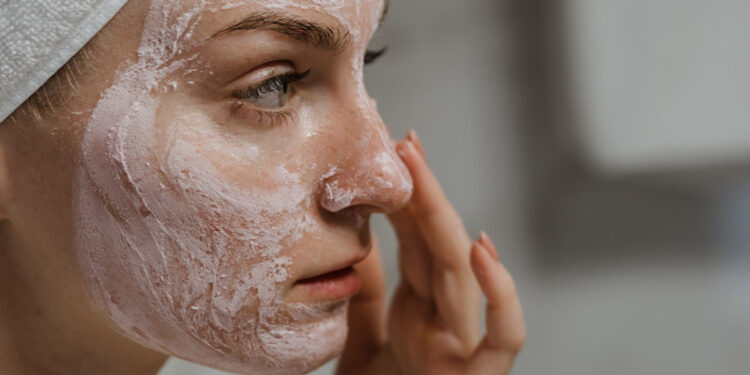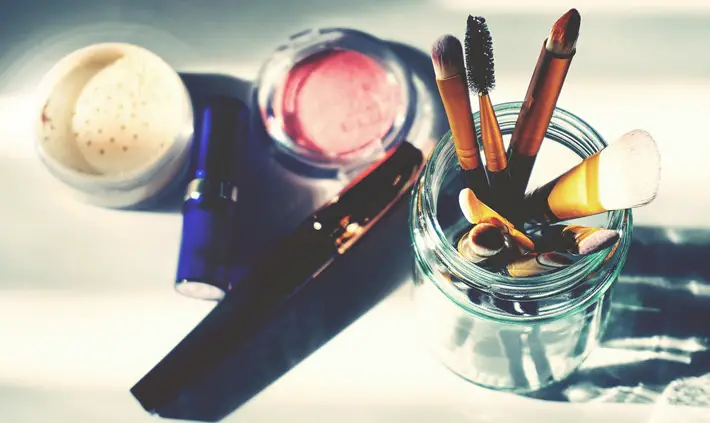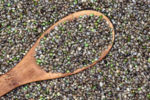5 Ingredients to Avoid When Buying Skincare Products

When browsing the beauty aisles, keep in mind that just because something is sold on a shelf doesn’t mean it’s safe. Your skin is not just the largest but also one of the most important organs your body has since it provides a protective barrier between what’s inside your body and the outside world, so it makes sense to be careful about what you put on it.
On a daily basis, the average woman uses 12 different skincare products containing 168 ingredients, and up to 60% of what we put on our skin gets absorbed. You’d be shocked to learn how many dangerous chemicals are found in these products. Your skincare products can absolutely make you sick. Some of the ingredients have been linked to eczema, allergies, hormonal disruption, reproductive issues, and cancer.
Maybe this is precisely why you’ve switched to natural products. However, they can contain just as many harmful chemicals as conventional ones. It’s also worth noting that the problem isn’t that skincare products are “full of chemicals.” Everything is made of chemicals – water, food, the ground. You, too. You are made of chemicals.
Natural cosmetics are not free of chemicals because there is no such thing. Plus, you don’t need to avoid chemicals altogether, just the harmful ones. There are natural ingredients that are harmful, just as there are synthetic ingredients that are safe.
The only way to know for sure whether or not a skincare product contains harmful ingredients is to read the label. With that being said, deciphering the long list of ingredients can be difficult. You can look into some online chemistry lessons, and there are also apps and databases that can help you.
You’ll also want to opt for companies that are transparent regarding the ingredients they use and committed to safety testing. Many companies don’t list every ingredient since some formulations are seen as “trade secrets.”
This is important because skincare products are not as heavily regulated as food products, but it does depend on where you live. For instance, the European Union has banned more than 1,300 skincare ingredients, while the U.S. has only banned 11.
The safety of skincare products depends mostly on self-regulation, and we’ve seen many cases where this system has failed. In 2018, Johnson & Johnson had to pay a $4.7 billion settlement to 22 women and their families in a lawsuit where they claimed that they developed ovarian cancer because of the asbestos found in the company’s baby powder. In 2016, another lawsuit involving WEN hair products was settled for $26 million after consumers complained that the products gave them rashes and resulted in hair loss.
Every day we’re exposed to toxic chemicals from a variety of sources that are beyond our control, but we can control the skincare products that we choose to buy.
Parabens
Parabens are used as preservatives, and although they’re widely known for their harmful effects, they’re still very common in the beauty industry. If a product has water in it, there’s a good chance it contains parabens to prevent the growth of bacteria. They can be listed under different names such as methylparaben, propylparaben, isopropylparaben, isobutylparaben and ethylparaben. Parabens can be found in anything from soap to lotion, but they’re especially common in moisturizers and makeup.
Parabens are dangerous because they can disrupt the endocrine system. They can mimic estrogen in the body, which can result in hormonal imbalance, infertility, and even breast cancer. Parabens and particularly methylparaben (mePB) have been found in breast cancer tissue, and there’s evidence to suggest they may contribute to the growth of hormone-receptor-positive breast cancer cells.
Oxybenzone and Other Chemical Sunscreens
There are two types of sunscreens you can buy: chemical and mineral. The most common ones are chemical and contain filters like oxybenzone, avobenzone, octocrylene, and ecamsule.
In 2020 the FDA published research showing that six widely-used chemical UV filters can be detected in the skin and bloodstream even weeks after application. Oxybenzone, in particular, has an absorption rate more than 180 times greater than the safe level, and that’s just after one application. After four applications, it increases to more than 500 times. Levels of these chemicals in the bloodstream remained elevated for up to 21 days.
UV chemical filters are chemical disruptors and have been linked to fertility problems, thyroid function issues, and negative birth outcomes when used during pregnancy. The American Academy of Pediatrics also advises parents not to use oxybenzone-containing sunscreens on their children.
Mineral sunscreens are considered safer because they use ingredients like zinc oxide and titanium oxide to create a protective barrier on the surface of the skin without getting absorbed into the bloodstream. However, be careful and read the label. Some products are sold under the name of “mineral sunscreen” but use both mineral and chemical filters.
Toluene
Toluene or methylbenzene is a colourless, clear liquid with a distinctive sweet smell that’s used as a solvent in hair dyes and nail products. In the short term, it can cause headaches, dizziness, and cracked skin, but it can also lead to respiratory complications, damage to the immune and reproductive system, and can even result in birth defects.
Phthalates
Phthalates are plasticizers which means they’re used to enhance the flexibility and strength of plastics. In the beauty industry, they’re added to nail polish to make it less brittle, to hair spray to make the film they form on the hair more flexible, and also as solvents and fixatives in fragrances – usually diethylphthalate (DEP). Phthalates are not used as often as in the past, with the exception of diethylphthalate that’s still very common.
Like the other ingredients we discussed in this article, phthalates are endocrine disruptors and can lead to reproductive issues.
Acrylates
Acrylates are derived from acrylic acid and can be listed under names like ethyl acrylate, ethyl methacrylate, and methyl methacrylate. In the beauty industry, they’re mostly found in artificial nail products or as adhesives for false eyelashes.
They can cause allergic reactions, but they’ve also been linked to more serious health problems like developmental issues and cancer. All artificial nail products contain some type of acrylate, so it’s best to avoid them or limit their use.










